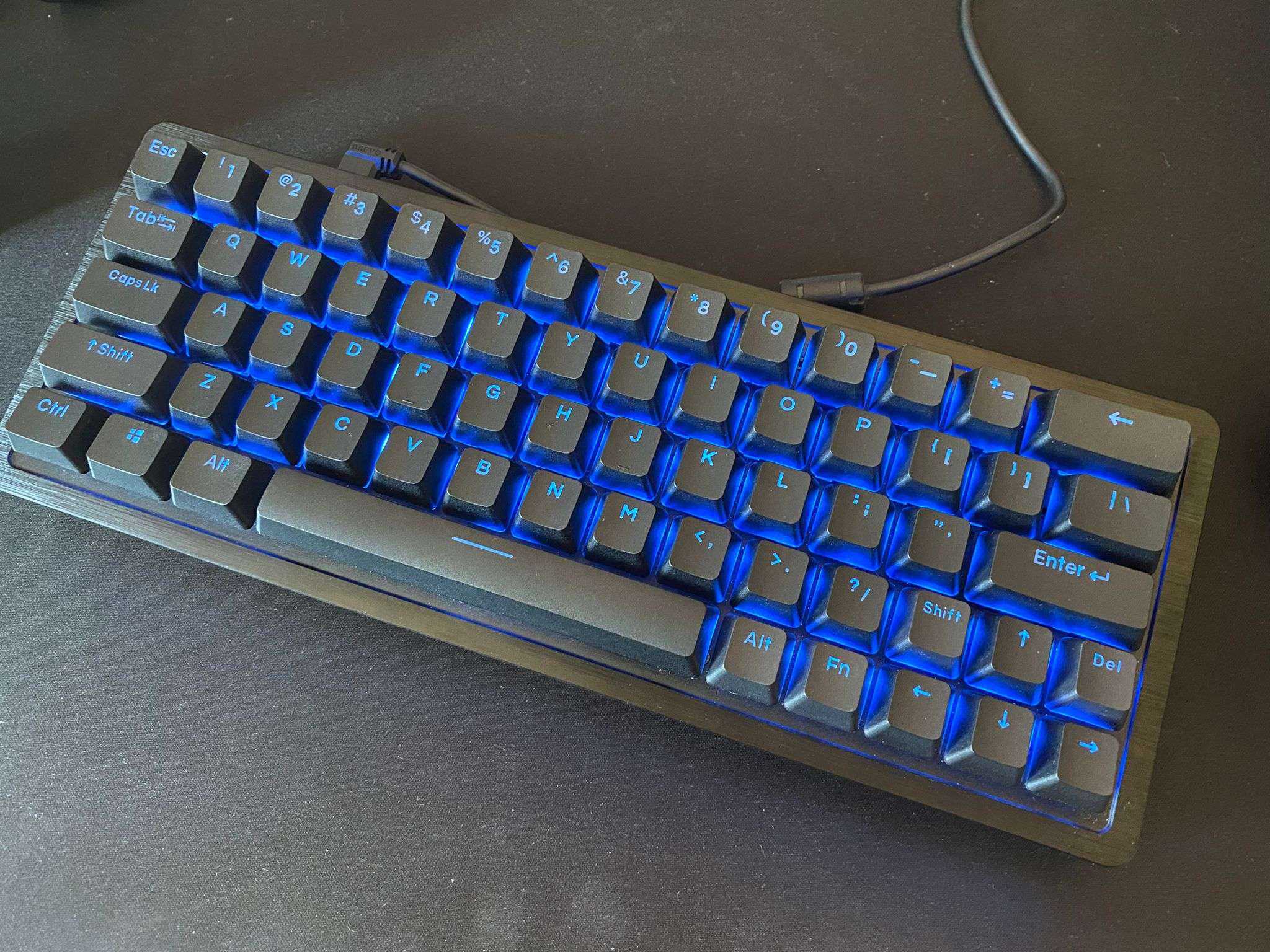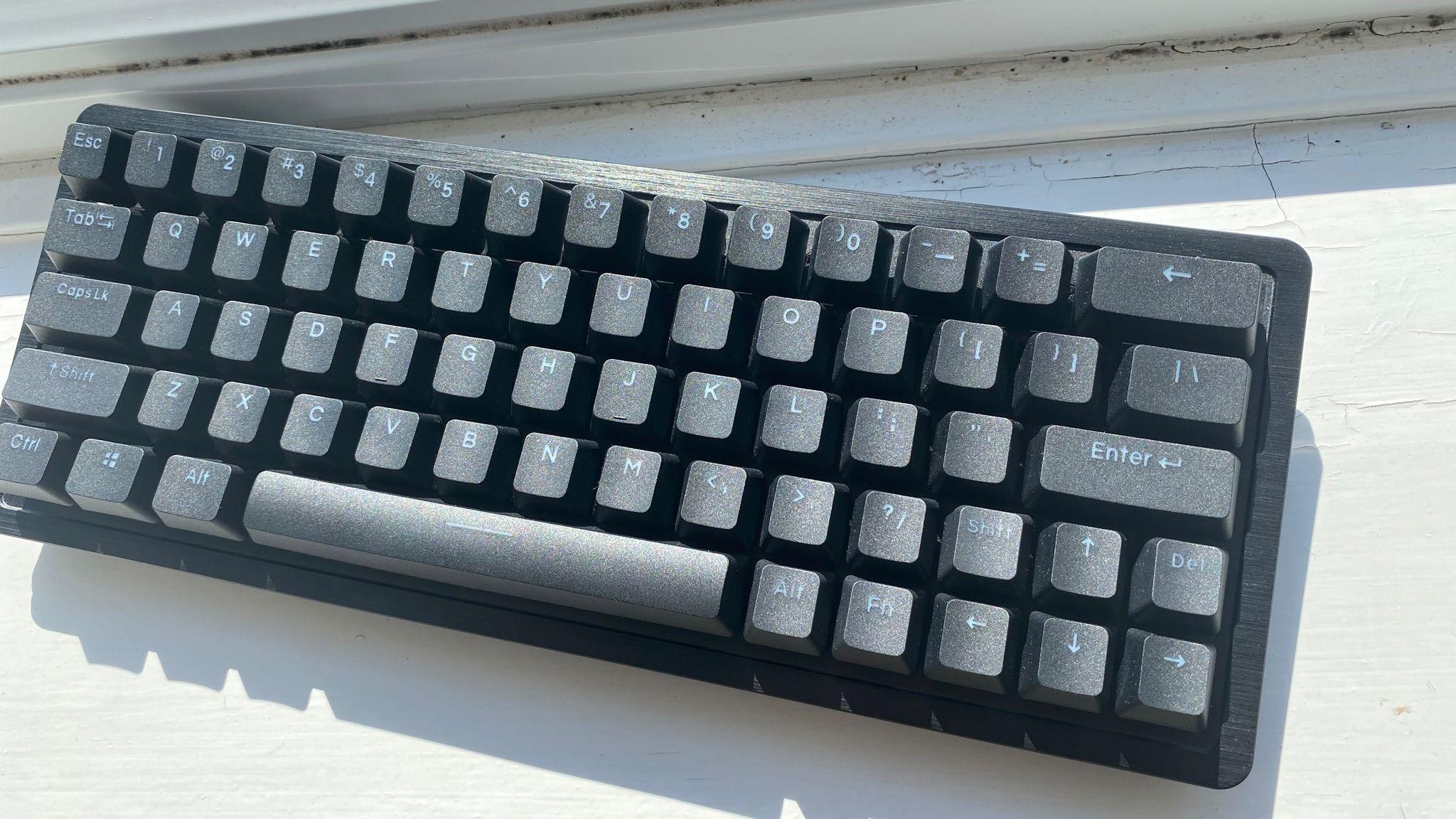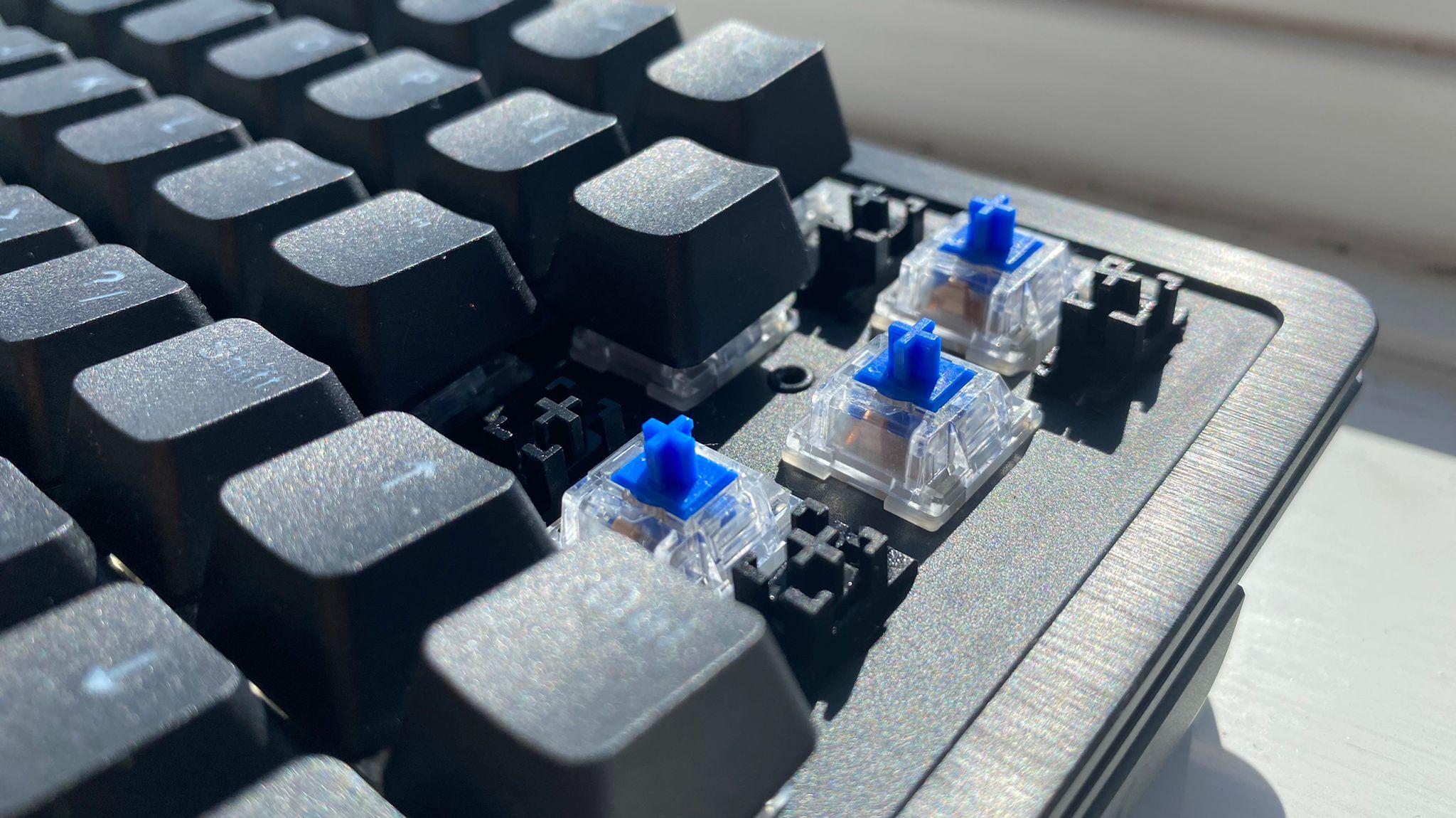Mountain Everest 60 review: The ultimate compact keyboard
 Dexerto
DexertoMountain is a relative newcomer to the PC peripherals market, having only brought its first product to market in 2021. However, the Everest 60 defies all expectations and disrupts the entire gaming keyboard market.
Gaming keyboards are a piece of tech that can be a little bit hit or miss if you do not know what you are looking for. The proliferation of mechanical boards has hit the mainstream gaming markets. But, happily bubbling away underneath that is a hobbyist keyboard scene. They’ve been there long before mechanical keyboards came back in vogue, and with more eyes on gaming keyboards than ever, the culture and hobby are thriving.
What most keyboard manufacturers have failed to capitalize on is tapping into this hobbyist keyboard market, and bringing fresh ideas into the community to their keyboards, it’s something that brands like Corsair just have not managed to do.
Now, mainstream manufacturers are heading in other directions, like bringing Optical switches to boards. However, Mountain dips into learnings from the hobbyist market more than the same tired trends from established manufacturers. The results of Mountain’s efforts are undeniably disruptive to the entire mainstream gaming keyboard market.
Key specs
- Switch type: Mountain Tactile 55, Linear 45, Linear 45 Speed
- Keycaps: Double-shot PBT shine-through
- Connectivity: USB-C
- Form factor: 60%
- Features: Lubed and clipped stabilizers, optional Numpad, foam and silicone dampening, multiple USB-C inputs, magnetic height adjustment, 1000Hz polling rate, 5 profiles
- Lighting: Mountain Basecamp
- Release date: Spring 2022
- Price: $139.99 / £119.99
- Where to buy: Mountain (US, UK)
Included in the box: Mountain Everest 60, USB-C to USB-A cable, keycap and switch puller, Mountain keycap, magnetic riser feet
Design
 Dexerto
DexertoThe Everest 60 looks understated, with rounded-off edges and a matte black finish. There’s a small strip of diffused RGB that runs a ring around the entirety of the chassis. With an aluminum top plate and an ABS base, this board is incredibly sturdy and looks understated on your desk. There is a slight bezel, which means that the keyboard will take up more space on your desk than the likes of a more basic 60% board seen from so many other brands.
However, it’s still very compact and doesn’t take up much space on your desk. The RGB is bright, and the three USB-C ports at the top allow you to plug your wire in wherever you want. This is a nice little touch that we wish that other keyboard companies looked at implementing, as a single big cable that’s non-detachable is pretty irritating, and fairly outmoded at this point. Additionally, magnetic caps protect two more USB-C connectors on the keyboard’s flanks, space for an optional Numpad.
The included magnetic risers work really well and they include a healthy dose of them for you to get your ideal typing angle. The only issue we really had with the design of the keyboard is the recessed plate, which has caused the board to become something of a dust magnet, that can be really hard to clean.
The double-shot PBT keycaps included on the board look and feel good, and use a neutral legend that looks great while illuminated, and when the RGB is turned off. We wish that there were more markings for the onboard keyboard macros because to access the deeper layers of the keyboard, we ended up having to dig out the manual. It looks really clean, to its detriment. Some extra markings would have been incredibly welcome.
the 60% form factor often means that you lose out on essential things like the arrow keys. However, Mountain has crammed them onto the board by shrinking down the right shift key and has also placed the delete key to the right of the top arrow key. This immediately makes the Everest 60 more usable for office use than the vast majority of 60% boards. It never really feels cramped when packing these extra keys in, to boot.
Setup and features
With plug-and-play functionality, you could happily use the Mountian 60 without ever installing their Base Camp software, where you are able to swap profiles on the board, and configure all manner of RGB effects to your heart’s desire. We didn’t really run into any issues when messing around with Basecamp, which also allowed you to customize keybinds and macros to your current profile.
In addition to this, there is also a gaming mode, where you are able to disable certain keys, such as ALT+F4 if you have a particularly bad round of Overwatch.
But, it’s not all about software, the keyboard also supports hot-swapping your switches out with 3 or 5-pin switches, which is compatible with pretty much every aftermarket switch that you could get your hands on. The included switch puller works well, and when we slotted in a C3 Kiwi switch of our own, it all worked without a hitch.
Mountian also sent over the optional add-on for the Mountain 60, a standalone Numpad that plugs into the USB ports on the side of the board. It looks, feels, and works just as well as the keyboard itself. We wish that it was a little bit cheaper, and had a stronger connection to the board since it likes to flop around if you pick it up. Regardless, it’s a nice addition to see on a 60% board if you absolutely need a Numpad, and want to part with more of your hard-earned cash for it.
Typing experience

Typing on the Everest 60 is an absolute treat. We opted for the Mountain 66 tactile switches, which operate similarly to Cherry MX Brown switches, and they felt amazing. We currently rock a fully-customized Keychron Q1 board for daily use and typing, with all manner of aftermarket switches and mods, and the Everest 60 feels just as good. This is through the use of several notes from the custom keyboard modding community. Firstly, the Mountain 55 tactile switches are all lubed, which makes for a smoother actuation, with no rattles or scratchiness to be found, unlike on many rival boards.
Secondly, the stabilizers on the board are also clipped and lubed, which makes them feel great, though the spacebar still sounds a little bit pingy and hollow for our liking. However, every other key sounds utterly incredible. It’s a world of difference from what rival brands do, and a huge breath of fresh air. It doesn’t end there.
Lastly, inside the board, Mountain has inlaid silicon within the bottom of the board and flushed it out with extra foam padding to make the board sound incredibly muted and deep. This is something that we don’t think any keyboard manufacturer would ever bother with. However, it makes a world of difference, bottoming out on keys feels like typing on a cloud. It sounds better than our custom-built keyboard in most cases.
This is without a shred of doubt the best-possible stock keyboard experience. The fact that none of this is aftermarket, and that the company has all included this on the Everest 60 by default is nothing short of incredible.
Is it good for gaming?
While the keyboard is excellent for typing, you also get good performance while gaming too. If you are switching from using it in the office, to gaming applications, just make use of the hot-swappable features and plug in your favorite linear switches. Then, you will have excellent performance in games. We tested it in CS:GO, and while you do not get the same responsiveness as a board with optical switches for competition-level performance, you’re still going to get an experience that is miles ahead of a “normal” non-optical gaming keyboard.
With a polling rate of 1000Hz, it works admirably, but as optical adoption and analog controls in PC games are still in their infancy, most people really are not going to notice the difference between optical and a traditional mechanical switch.
Honestly speaking, it’s more than up to the task of playing your favorite games, and we’re sure that unless you are gunning for competitive-level performance in the games that you do play, the Everest 60 won’t let you down.
Should you buy it?
The Everest 60 offers oodles of features while retaining a premium gaming and typing experience. Though the gaming performance doesn’t match up to optical boards, the Mountian 60 still offers much more than your average 60% board does. It manages to retain crucial keys that other rival 60% boards should look to, and it also offers a typing experience that you simply cannot get anywhere else without modding your keyboard.
10/10
There are very few things to complain about when it comes to the Everest 60. Aside from a polling rate that we would have liked to have seen a bit higher, everything from the build quality to typing experience is near-flawless. Bravo Mountain, we cannot wait to see what you do next.
The Mountain Everest 60 is available now directly from Mountain (US, UK)



